Originally published on November 16, 2022
We’re in an electricity crisis, with reliable power plants shutting down far faster than they are being built.
And yet the Environmental Protection Agency (EPA) plans to make things much worse with 7 policies that gravely threaten 10-20% of our reliable capacity in the next 7 years.
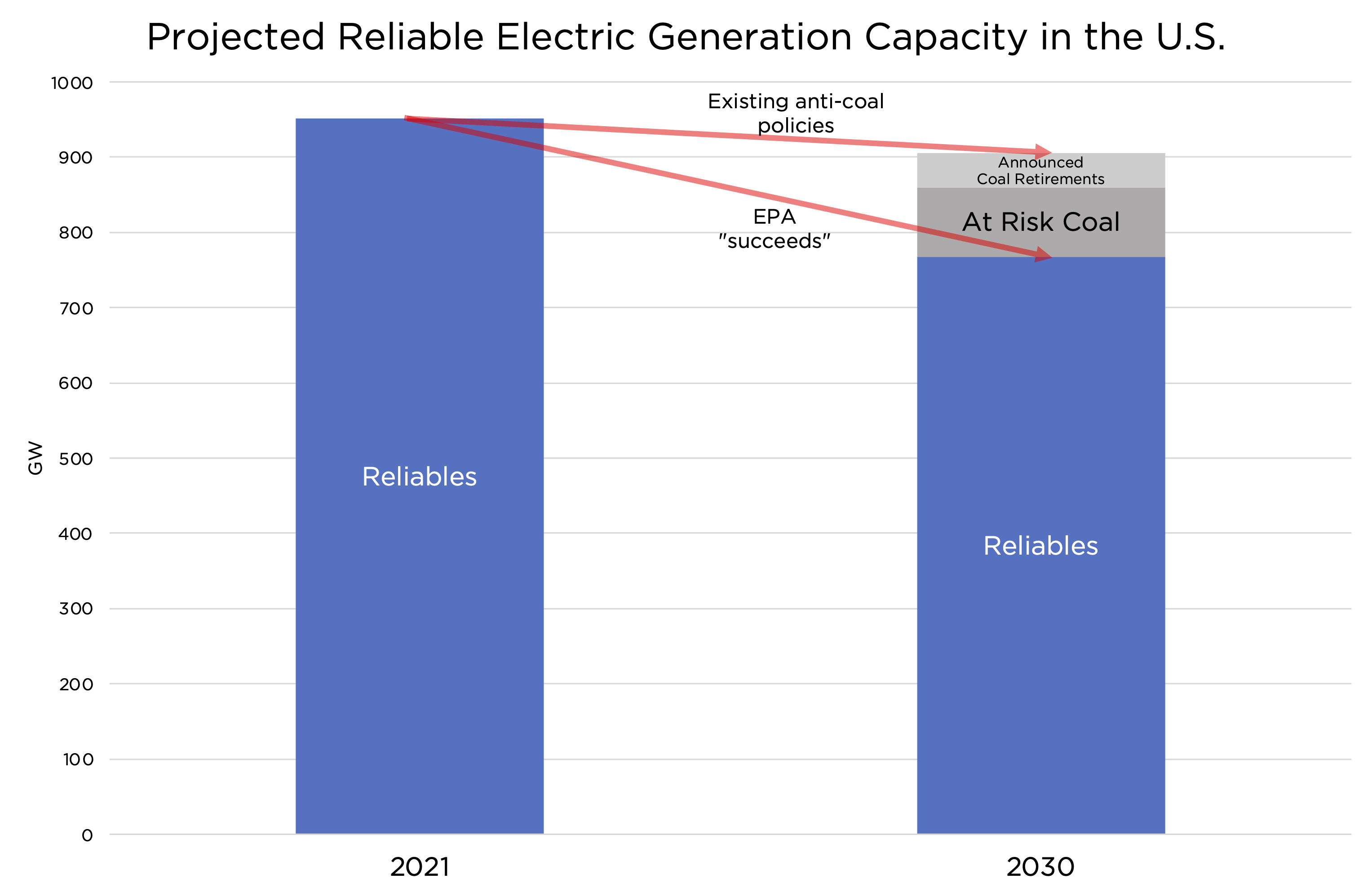
-
A reliable grid is foundational to our quality of life. Our lives depend on ultra-reliable electricity for the refrigerators that preserve our food, the water treatment plants that keep our water drinkable, the air conditioning that keeps us cool, the factories that produce our goods, etc.
-
Ominously, America’s grid is in its most fragile state in decades. Not only have we witnessed ruinous blackouts in California and Texas, electricity shortages are now routine throughout the US.
Federal Energy Regulatory Commission (FERC) Commissioner Mark Christie: “We’re heading for a reliability crisis.”1
-
The root cause of the reliability crisis is simple: America is shutting down too many reliable power plants—plants that can be controlled to produce electricity when needed in the exact quantity needed. And it is attempting to replace them with unreliable solar and wind.
-
Since at any given time solar and wind can go near zero, using them as replacements for reliable power plants doesn’t work. For example, Texas’ February 2021 disaster was caused by solar/wind disappearing and inadequate investment in reliable power plants and their weatherization.2
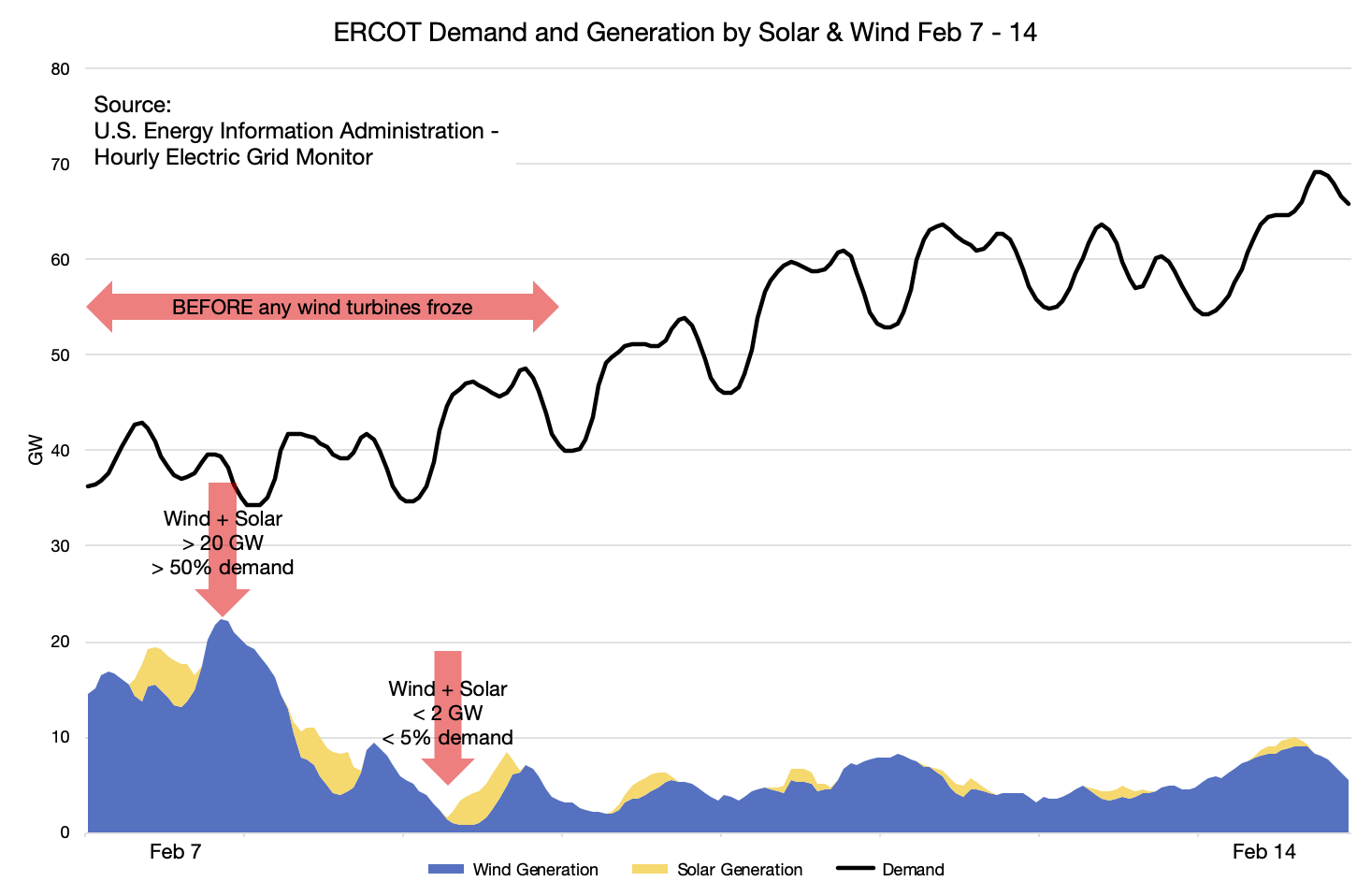
-
The most shutdowns over the past 10 years have occurred with reliable, resilient coal plants.
When coal plants were at retirement age and replaced more cheaply by gas plants, shutdowns made sense. But most coal was retired early, at great cost—and not sufficiently replaced.
-
Today, America’s “coal fleet” has ~200 gigawatts of electricity generation capacity — down ⅓ (>100 gigawatts) from just 10 years ago. It is currently over 20% of our reliable capacity. If we lose any more coal plants without reliable replacements, we could easily see grid collapse.3
-
Observe the trajectory of American electricity for the next 7 years according to Energy Information Administration announcements: 72 gigawatts of announced reliable power plant shutdowns and only 26 gigawatts of additions.
This is really bad. But the Biden EPA plans to make it far, far worse.4
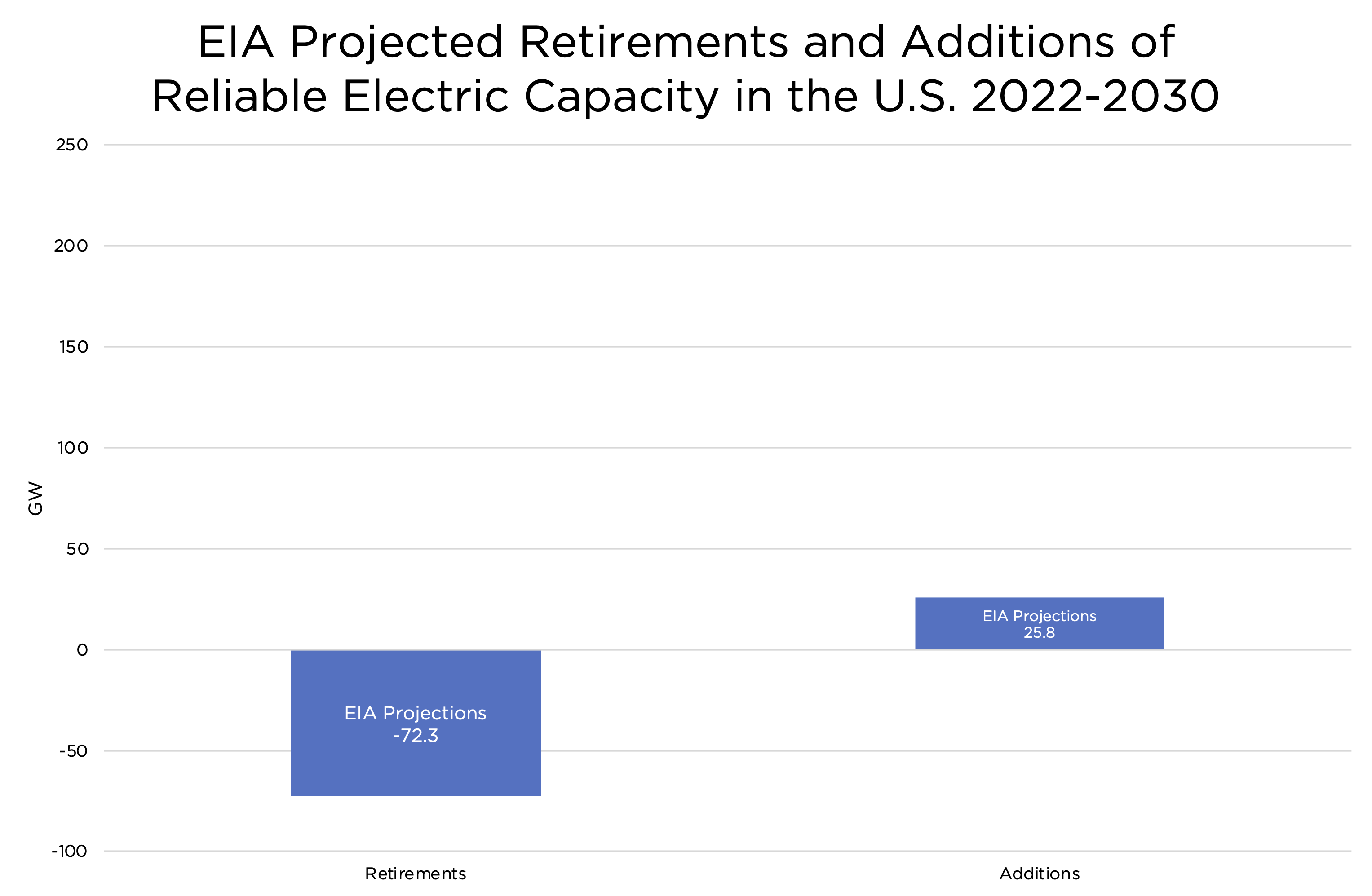
-
The Biden administration should recognize the electricity crisis and act immediately to reverse the policies causing the rapid shutdowns of reliable power plants. The EPA should be a major focus, since EPA policies such as the 2015 Mercury and Air Toxics Standards (“MATS”) rule have shut down many plants.
-
When considering any changes to regulations of our power plants, which are already clean enough that we have some of the highest air quality in the world, EPA, which is supposed to do “benefit-cost analysis,” should factor in the existential risk of an unreliable grid.
-
The consequences of an unreliable grid are catastrophic for the EPA’s focus, human health and environmental quality, killing via lack of heating and air conditioning, preventing water treatment, disrupting emergency services, and by making us all poorer—poverty being the worst thing for health.
-
Instead of ordering EPA to stop contributing to the electricity crisis, the Biden administration has used it to threaten as many coal plants as possible by pushing rules that totally violate “benefit-cost analysis”—yielding tiny health benefits while costing us a reliable grid.
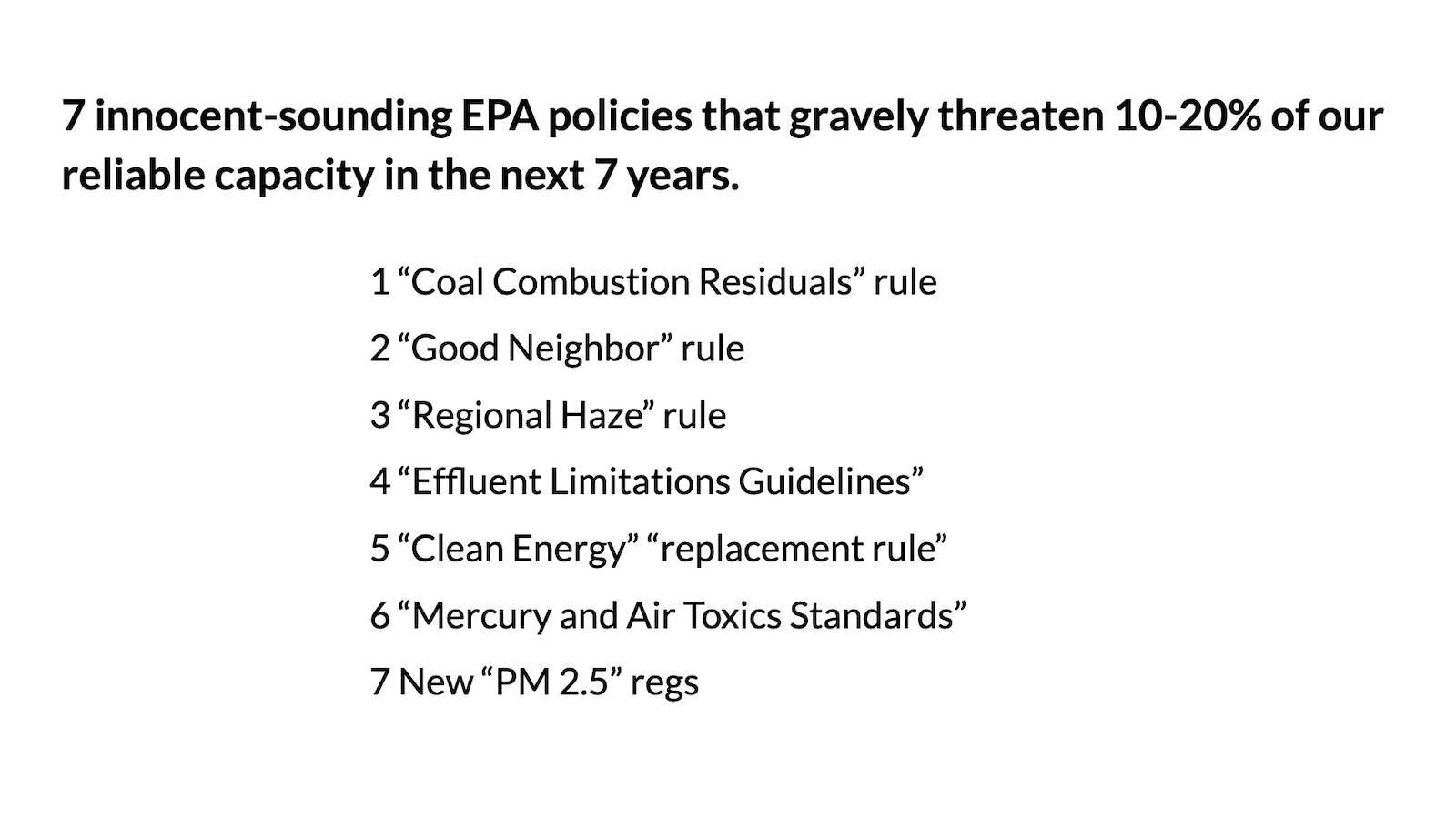
-
Thanks largely to EPA, the next 7 years are scheduled to be a bloodbath of reliable capacity retirements. There are 93 gigawatts of announced coal plant retirements, plus up to 92 more gigawatts are at risk retiring early due to new EPA rules. That’s about ⅕ reliable capacity!5
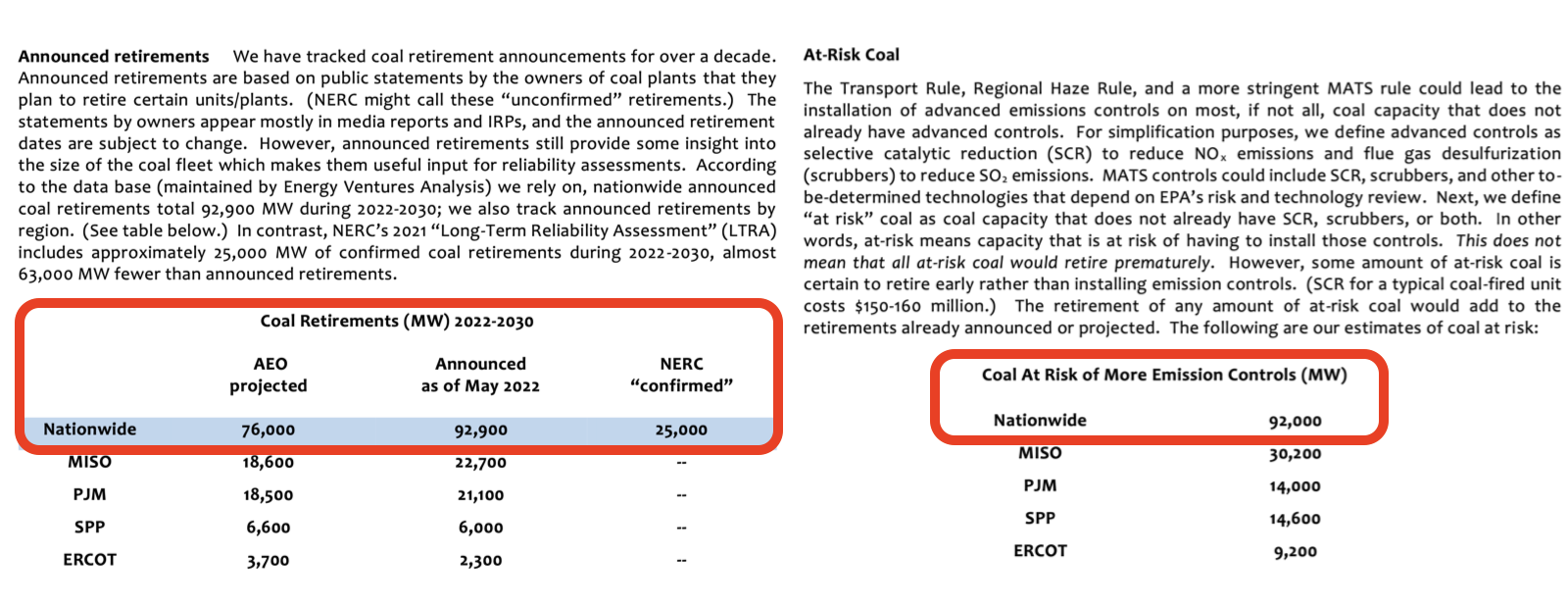
-
Consider this graphic of what our grid will look like if the EPA “succeeds” with its anti-coal agenda.
If our grid is riddled with reliability problems now, what will it look like when we lose a fifth of our already-insufficient reliable electricity generation?6

-
The secret to the EPA getting away with wrecking our grid is to pass innocent-sounding “health” rules specifically designed to shut down as many coal plants as possible, while totally denying the huge economic and health consequences of an unreliable electric grid.
-
The innocent-sounding names of the EPA’s 7-pronged attack on the grid:
- “Coal Combustion Residuals” rule
- “Good Neighbor” rule
- “Regional Haze” rule
- “Effluent Limitations Guidelines”
- “Clean Energy” “replacement rule”
- “Mercury and Air Toxics Standards”
- New “PM 2.5” regulations
-
EPA grid attack 1: The Coal Combustion Residuals Rule (CCR)
This rule addresses a legitimate, but not urgent, issue: higher standards for coal waste disposal.
But CCR has a deliberately impossible compliance timeline for coal plants, threatening to shut down 42 GW of capacity.
-
EPA grid attack 2: The “Good Neighbor” Rule
This rule sets ozone levels that many coal power plants can’t afford to comply with and will therefore have to shut down over.
This deadly hit to the grid makes no sense; ozone levels are low throughout the US.7
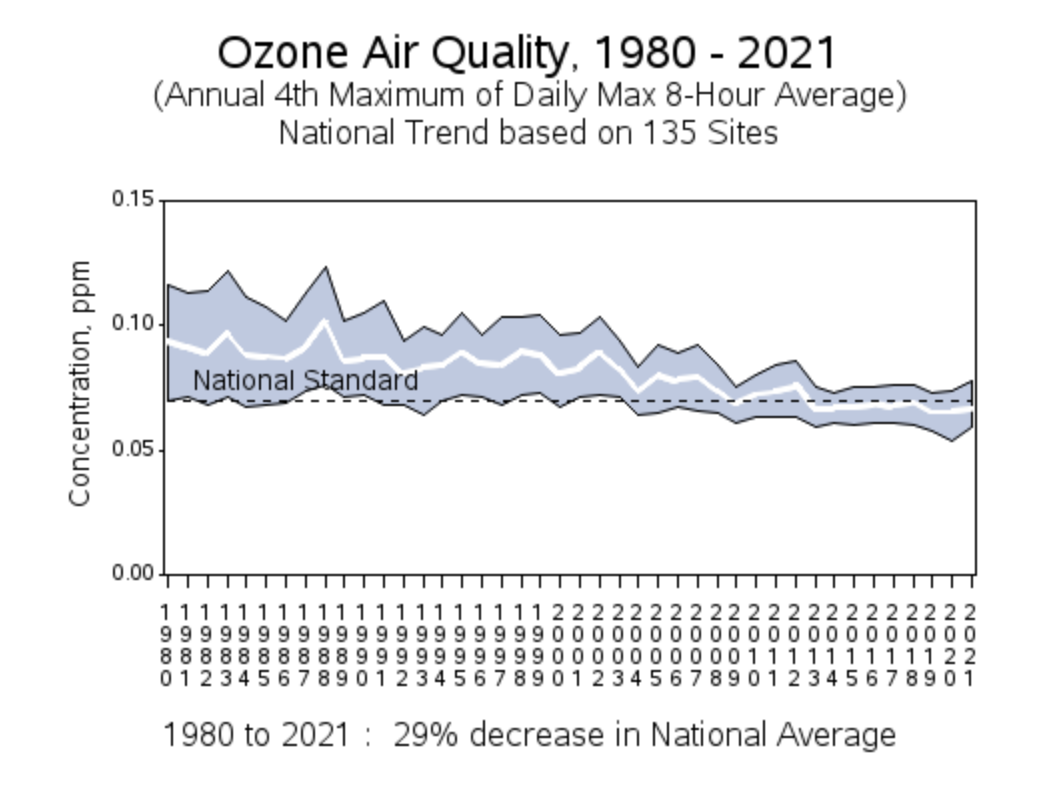
-
EPA grid attack 3: The “Regional Haze” Rule
This rule, whose goal is to restore “natural visibility” to certain national parks and wilderness areas by 2064, is being used to try to shut down vital coal plants today.
This makes no sense—except to satisfy an anti-coal agenda.8
-
EPA grid attack 4: “Effluent Limitations Guidelines”
In 2015 the Obama EPA established costly rules for wastewater discharged from power plants. The Trump EPA in 2020 allowed more cost-effective approaches, but the Biden EPA is threatening to create more costly rules again.9
-
EPA grid attack 5: “Clean Energy” “replacement rule”
With Obama’s “Clean Power Plan” struck down by the Supreme Court, the Biden EPA is working on a “replacement rule.” Given Biden’s intention of eliminating coal, this rule is sure to lead to more shutdowns when we can least afford them.
-
EPA grid attack 6: “Mercury and Air Toxics Standards”
US mercury emissions are small and have been falling for decades. But in 2012 the Obama EPA created mercury rules that shut down dozens of coal plants. Now EPA is preparing stricter rules, falsely claiming huge net benefits.10
-
EPA grid attack 7: New “PM 2.5” regulations
Although “particulate matter 2.5” has been decreased to low levels, despite increasing fossil fuel use, the Biden EPA is working on more stringent rules that are likely to shut down even more coal plants when we can least afford it.11
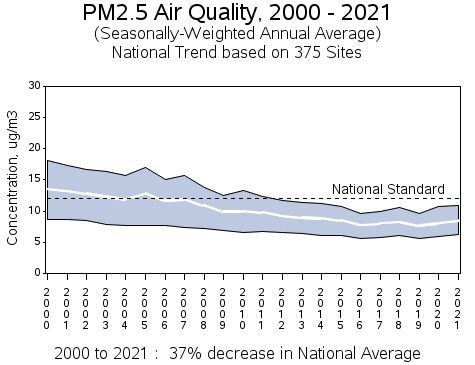
-
The Biden EPA is poised to do catastrophic damage to our grid. In the next 7 years we could easily see over 20% of our reliable capacity destroyed. We must demand that the administration acknowledge our electricity emergency and start doing real cost-benefit analysis.
-
To prevent any further worsening of our electricity emergency, the EPA needs to:
- Put a pause on any new rules that could adversely affect reliability
- Offer extensions to meet existing rule timelines
- End the “New Source Review” policies that make plant upgrades expensive
-
Put a pause on any new rules that could adversely affect reliability
The rules EPA is considering don’t involve an urgent risk to Americans, whereas any further degradation in reliability is an urgent risk.
Until America starts adding reliable capacity EPA needs a pause.
-
Offer extensions to meet existing rule timelines
Given the urgent need to keep reliable power plants open and the difficulties that today’s supply chain crisis is causing for all construction-related projects, EPA should offer power plants extensions on complying with rules.
-
End the “New Source Review” policies that make plant upgrades expensive
“New Source Review” considers an existing, upgrading plant a “new” plant that then must follow every rule for new power plants. This perversely encourages plants not to make individual upgrades.12
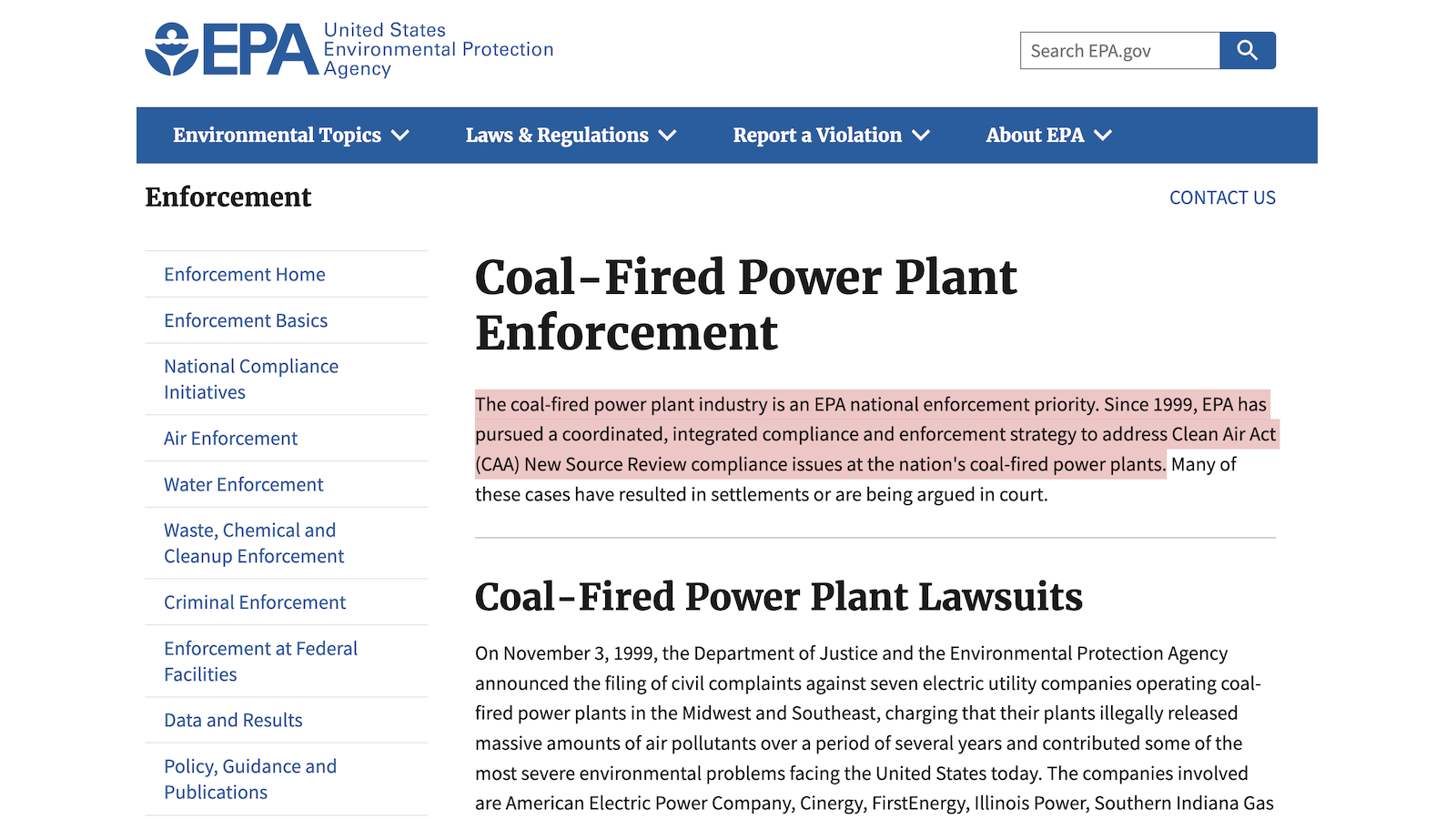
-
Once the immediate crisis to our electric grids is defused, we need significant reform of the regulatory apparatus and major legislation to take into account the true cost of regulation and to prevent executive agencies from exercising so much arbitrary power.
-
A first step is for the EPA to use a decision-making framework that considers ALL risks and side-effects regulations have, including damage to the economy in general and affordable energy in particular.
Had such a framework existed we wouldn’t have today’s electricity emergency.
References
-
America’s Power - What Others Are Saying About the Potential Reliability Crisis↩
-
Alex Epstein - Talking Points on the Texas Electricity Crisis
Brent Bennett - Forget About What Broke: The Texas Blackout Was Inevitable
U.S. Energy Information Administration - Hourly Electric Grid Monitor↩
-
U.S. Energy Information Administration - Electric Power Annual↩
-
U.S. Energy Information Administration - Electric Power Monthly, October 2022
U.S. Energy Information Administration - Electric Power Annual↩
-
America’s Power - Letter to Mr. James B. Robb, President and CEO North American Electric Reliability Corporation↩
-
U.S. Energy Information Administration - Electric Power Annual
America’s Power - Letter to Mr. James B. Robb, President and CEO North American Electric Reliability Corporation↩
-
Louisiana Department of Environmental Quality - Regional Haze Program↩
-
U.S. Environmental Protection Agency - 2021 Supplemental Steam Electric Rulemaking↩
-
Competitive Enterprise Institute - EPA Mercury Rule an Inappropriate Exercise of Regulatory Power
U.S. Environmental Protection Agency - Proposed Revocation of the 2020 Reconsideration and Affirmation of the Appropriate and Necessary Supplemental Finding↩
-
U.S. Environmental Protection Agency - Particulate Matter (PM2.5) Trends↩
-
U.S. Environmental Protection Agency - Coal-Fired Power Plant Enforcement↩
